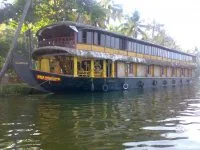It will expect username and password from the calling function.
Also it will expect some parameter(Name) from the calling function. Below is the code
import java.io.ByteArrayOutputStream;
import java.io.File;
import java.io.FileOutputStream;
import java.sql.Connection;
import java.sql.DriverManager;
import java.util.Date;
import com.crystaldecisions.sdk.occa.report.application.ReportClientDocument;
import com.crystaldecisions.*;
import com.crystaldecisions.sdk.occa.report.data.Connections;
import com.crystaldecisions.sdk.occa.report.data.Fields;
import com.crystaldecisions.sdk.occa.report.data.IConnection;
import com.crystaldecisions.sdk.occa.report.data.ParameterField;
import com.crystaldecisions.sdk.occa.report.exportoptions.ReportExportFormat;
try {
String exportFileName = “D://path/outputFileName.pdf”;
clientDoc.open(report_name, ReportExportFormat._PDF);
clientDoc.getDatabaseController().logon(“user_name”, “password”);
clientDoc.getDataDefController().getParameterFieldController().setCurrentValue(“”, “Name”,”anand”);
ByteArrayInputStream bais = (ByteArrayInputStream) clientDoc.getPrintOutputController().export(ReportExportFormat.PDF);
int size = bais.available();
byte[] barray = new byte[size];
FileOutputStream fos = new FileOutputStream(new File(exportFileName));
ByteArrayOutputStream baos = new ByteArrayOutputStream(size);
int bytes = bais.read(barray, 0, size);
baos.write(barray, 0, bytes);
baos.writeTo(fos);
bais.close();
baos.close();
fos.close();
dbConn.close();
e.printStackTrace();
}
}




















